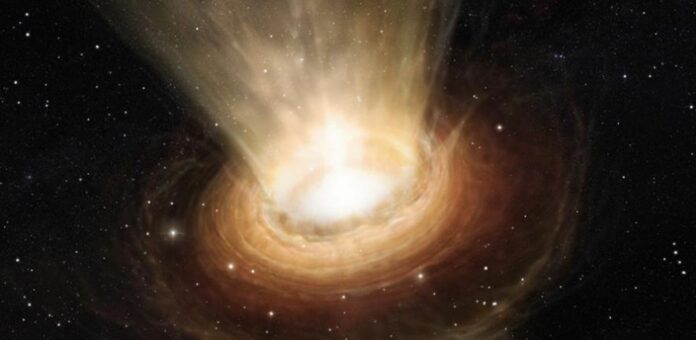It seems that stony objects predominate in planetary systems like our Solar System compared to gas-rich ones. This covers the Kuiper belt, the asteroid belt, and the inner planets. Nonetheless, for a considerable amount of time, astronomers have noted that the initial mass of gas in planet-forming disks is often 100 times greater than that of solids. This raises a crucial question: how and when does most of the gas exit the disk or system?
The James Webb Space Telescope (JWST) is vital for studying planet formation. JWST is improving our understanding of this process by examining the planets’ birthplaces, which are the circumstellar disks that encircle young stars.
A group of researchers led by the University of Arizona has imaged an ancient planet-forming disk actively distributing its gas content for the first time in a new study. The researchers are from the Universities of Leicester, Cambridge, and Arizona.
Scientists need to know when gas departs protoplanetary disks to calculate how long it will take for newly formed planets to absorb gas from their surroundings.
Planets originate inside a spinning disk of gas and microscopic dust particles surrounding a young star during the early phases of planetary system formation. Planets are created when these particles aggregate to form planetesimals, which are larger chunks that eventually collide and join to become planets. The quantity and duration of material present in the disk determine the properties of the planets. As a result, how the disk evolves and disperses greatly influences how planet formation turns out.
The recent discovery centers on the observation of T Cha, a young star whose disk is progressively shedding gas. This is demonstrated by the observation of winds made of noble gases, such as argon and neon, coming from a larger area of the disk. This is the first photograph of such winds in a disk that is creating planets. Gaining knowledge about these winds’ mechanisms will help us comprehend how they have affected our solar system and its past.
Scientists have been working to solve the riddles of protoplanetary disk winds for more than ten years. Comparing JWST observations to those from ground-based telescopes in the past, researchers have access to a plethora of data that represents a considerable advancement in this quest.
Co-author Professor Richard Alexander from the University of Leicester said, “We first used neon to study planet-forming discs more than a decade ago, testing our computational simulations against data from Spitzer and new observations we obtained with the ESO VLT. We learned a lot, but those observations didn’t allow us to measure how much mass the discs were losing.”
“The new JWST data are spectacular, and resolving disc winds in images is something I never thought would be possible. With more observations like this, JWST will enable us to understand young planetary systems as never before.”
The study’s lead author, Naman Bajaj from the University of Arizona, said, “These winds could be driven either by high-energy stellar photons (the star’s light) or by the magnetic field that weaves the planet-forming disc.”
To differentiate between the two, the same group, this time led by Dr. Andrew Sellek of Leiden Observatory and formerly of the University of Cambridge’s Institute of Astronomy, performed simulations of the dispersal driven by star photons. They find that dispersal by high-energy star photons is a viable explanation for the observations and cannot be ruled out after comparing these simulations to the actual data.
To put things into perspective, scientists have determined that the moon’s mass is equal to the amount of mass released annually from these protoplanetary discs!
The same team, now under the direction of Dr. Andrew Sellek of Leiden Observatory and formerly of the University of Cambridge’s Institute of Astronomy, simulated the dispersal driven by star photons to distinguish between the two. After comparing these simulations with the actual data, they conclude that dispersal by high-energy star photons is a plausible explanation for the observations and cannot be ruled out.
The implications of these findings are profound, offering new insights into the intricate interactions that influence the dispersal of gas and dust essential for the formation of planets. By gaining a deeper understanding of the mechanisms behind disc dispersal, scientists can better predict the conditions and timelines conducive to the formation of planets.
Journal Reference:
- Naman S. Bajaj et al. ‘JWST MIRI MRS Observations of T Cha: Discovery of a Spatially Resolved Disk Wind.’ The Astronomical Journal (2024). DOI: 10.3849/1538-3881/ad22e1
